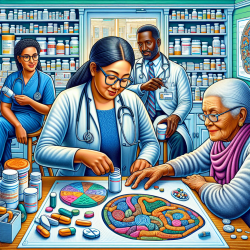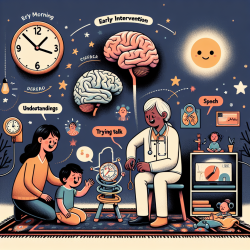In the ever-evolving landscape of healthcare, the importance of clear communication between healthcare providers and patients cannot be overstated. A recent study titled "Expanding the Universal Medication Schedule: a patient-centred approach" sheds light on how improved medication instructions can significantly enhance patient comprehension, adherence, and safety. This blog explores how practitioners can leverage these findings to improve their practice and patient outcomes.
The Importance of Clear Medication Instructions
Medication errors are a significant concern in healthcare, with approximately 4.5 million outpatient visits annually attributed to adverse drug events (ADEs). Misunderstanding prescription medication instructions is a major contributing factor. The study highlights that current prescription labelling practices often fail to support patient understanding or safe use of medications.
The Universal Medication Schedule (UMS)
The Universal Medication Schedule (UMS) was introduced as a framework to standardize medication instructions using health literacy best practices. By anchoring medication-taking to four specific time periods (morning, noon, evening, bedtime) and using simplified language, UMS aims to enhance patient understanding. An efficacy trial demonstrated that patients were 33% more likely to correctly interpret UMS instructions compared to standard instructions.
Expanding the UMS Framework
The study sought to expand the UMS principles beyond daily pill-form medications to include non-pill forms (such as injections and inhalers), short-term medications (like antibiotics), 'as needed' medications (such as pain relievers), and tapered or escalating dose medications (like steroids). These categories often pose challenges for patients due to complex dosing requirements.
Key Findings and Recommendations
- Simplified Language: Participants in the study expressed a preference for clear and concise wording. Terms like "subcutaneously" were replaced with "under your skin" for better comprehension.
- Nutritional Information: Numeric presentations of numbers were preferred over alphanumeric formats. For example, writing "half" instead of using fractions like "½" was favored for clarity.
- Tying Medications to Symptoms: Including information on when medications should be taken (e.g., "when you are short of breath") improved patient orientation and understanding.
- Counseling and External Aids: Participants emphasized the need for additional support such as counseling and external aids for complex dosing regimens.
Implementing Findings in Practice
The findings from this research provide valuable insights for practitioners aiming to improve patient outcomes through better communication. By adopting these patient-centered instructions, healthcare providers can enhance medication adherence and safety. Additionally, further research is encouraged to develop language-concordant instructions and evaluate their effectiveness across diverse populations.
This study underscores the need for ongoing efforts in promoting health literacy-informed labelling practices. As states like California move towards standardized prescription labels incorporating UMS principles, practitioners have an opportunity to lead by example in adopting these best practices.
Expanding the Universal Medication Schedule: a patient-centred approach










